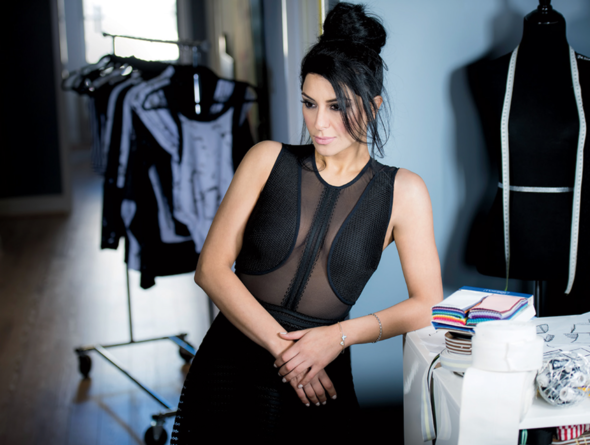
The ability to chart one’s own economic destiny by becoming an entrepreneur is one of the hallmarks of capitalism. Many of today’s most recognized companies and brands began as the brainchild of an individual who embraced the risks of entrepreneurship with hopes of realizing their entrepreneurial vision. Yet, while in theory entrepreneurship is anybody’s game, rates of female entrepreneurship have historically lagged those of men.
Thankfully, for the benefit of innovation, business, and society as a whole, in recent years we have seen an increase in rates of women entrepreneurship. Globally, from 2015 to 2016, women entrepreneurship rates increased by double that of their male counterparts. In the United States, not only do women own 11.3 million businesses, it is estimated that 36 percent of all businesses are owned by women, an increase of six percent from 2007. Perhaps not surprisingly, according to a study by Dell, the United States ranks number one in the world in terms of providing the world’s most favorable business climate for women entrepreneurs.
Increasing female entrepreneurship rates are only half of the story. The economic impact of increased female entrepreneurial participation is significant and holds the potential to continue to be a major driver of economic growth. In the United States, with an economic impact of $3 trillion, women owned businesses are credited with creating or maintaining 23 million jobs. When coupled with statistics showing that women-led companies perform twice as well as those led by men, one can begin to imagine the significant impact the continued increase of women-led businesses can have on domestic job creation and economic growth. Furthermore, as investors continue to seek opportunities to maximize returns on their capital they would be wise to look towards female-led businesses; studies show that on average female founded companies create over 60 percent more value for investors than those founded by men.
Despite great strides, female entrepreneurs continue to face roadblocks. As noted by the Organization for Economic Development and Cooperation (OECD), among other challenges, lack of training and financing remain major obstacles for female entrepreneurs in the United States. The lack of financing allocated for women-led enterprises is particularly appalling; of the $58 billion that was invested by venture capitalists in 2016 only $1.46 billion reached women-led companies. While female-led businesses are increasingly being funded, access to capital for female entrepreneurs is far from reaching parity.
Regardless of gender, any entrepreneur will tell you that successful entrepreneurship is a challenging task requiring deep commitment and unlimited amounts of motivation. A testament to the aforementioned, I recently had the opportunity to interview entrepreneur, designer, and author Tala Raassi, the founder of Tala Raassi Swimwear. Dubbed by Newsweek magazine as “One of the Most Fearless Women in the World”, Tala’s memoir, “Fashion Is Freedom: How a Girl from Tehran Broke the Rules to Change her World” traces her unlikely path to fashion industry entrepreneurship. Fresh off the heels of her recent TedX talk, Tala and I discussed her views on business, women entrepreneurship, and writing a book. Hope you enjoy!

Tala Raassi, Founder and Designer, Tala Raassi Swimwear
CG: Tell me about your company. How did you get into fashion?
TR: I grew up in a part of the world where women’s freedom of choice was restricted. As a little girl captivated by fashion I didn’t get to witness women who had choices in what they wore. However, as I entered my teenage years and was introduced to the Western culture I was able to witness women who had options and fashion formed as a shape of freedom to me. I had realized that freedom was not about the amount of clothing you put on or take off, it was about having the choice.
I wanted to create a fashion label celebrating the beauty of women’s bodies through my designs and to empower women all around the world to follow their dreams. Tala Raassi swimwear is a contemporary brand designed for the sophisticated, bold, fearless globetrotter. I take inspiration from couture and ready-to-wear and construct edgy multipurpose beachwear. Swimwear has become a fashion statement. It is no longer only the garment that you swim in but now a multibillion dollar industry of lifestyle and trend.
CG: Entrepreneurship is rife with challenges. What advice would you give to other entrepreneurs hoping to follow in your footsteps?
TR: Starting a business can be intimidating and it’s somewhat common to focus on the possibility of failure. It’s a fact of life that many of the risks we take won’t pay off the way we want them to. Don’t let the possibility of failing or rejection stop you from pushing forward, because beyond the risk always lies the opportunity for wisdom and growth. People often look at the big picture and the final destination. You have to pay attention to the details and remember that the journey is your destination. Being a successful entrepreneur often involves a series of missteps and mistakes before finally nailing the right concept or business. If you are not making mistakes or getting rejected enough times, chances are you are not pushing yourself hard enough.
You have to become the best version of yourself every day and in everything that you do. The difference between a successful entrepreneur and a failed one is often just persisting through the tough times. Sometimes it just requires that extra attempt. If you achieve some success remember to always stay humble and hungry. Don’t get comfortable with your achievements. Always plan and don’t give up before the race is over!
CG: Female entrepreneurs are an important part of our economy. What do you think can be done to increase female entrepreneurship rates?
TR: Historically, female entrepreneurs have faced more challenges in startups than men. Women face systemic social and financial challenges while starting a business. However, women are becoming more entrepreneurial and there is an increasing number of opportunities available to women in business today. I believe that today provides a perfect opening and a perfect break for female entrepreneurs.
Women often feel unheard, frightened and intimidated in the business world. We need to give them a voice, a sense of comfort and a clear path to follow. That starts with empowering, inspiring and educating women and young girls. We have to create an accessible culture for the next generation of women.
Women who are leaders and in a position of power, I feel, have a responsibility to aid in the success of others. We need to advocate for other women and nurture their strength and passions.
CG: You are also an accomplished author. Tell me about your recent book?
TR: There are many challenges to being an entrepreneur. You are essentially working in a vacuum. Throughout my entrepreneurial journey I have faced many challenges that I needed to overcome. At times reaching my dream had seemed impossible. I had to learn to wear many different hats and adopt to changes quickly. I came to realize that not all changes lead me to glory, but overcoming the wickedest, most difficult changes in my life directed me to what I truly desired.
Fashion is Freedom is a memoir of personal struggles and growth. From growing up in Iran under many limitations to moving to America and facing countless possibilities. Navigating these two dramatically different worlds instilled in me the desire to create more opportunities for myself. I wanted to write this book to show young girls that the road to success is a bumpy one but it does not mean we can never succeed.
CG: How is the process of writing a book both similar and different from that of starting and building your own company?
TR: Writing a book and starting a business share many similarities. Neither have a defined path of success or a road map that helps you navigate around the obstacles. There is no right way to publish a book. There is no right way to run a business. You take best practices and conform to what you think best suits you and your customers/readers.
When I first started down the journey of writing my book, I used a lot of what I learned from running my company to guide me through the process. Writing and publishing the book required the same acumen of planning, pitching, branding, and marketing as my business did. I was forced to teach myself how to overcome challenges and had to push on without being caught up on any single issue. A book is a startup!
CG: Any parting words?
TR: We are not owed anything in this life; If you want something bad enough, you have to go get it.
CG: Thank you!
